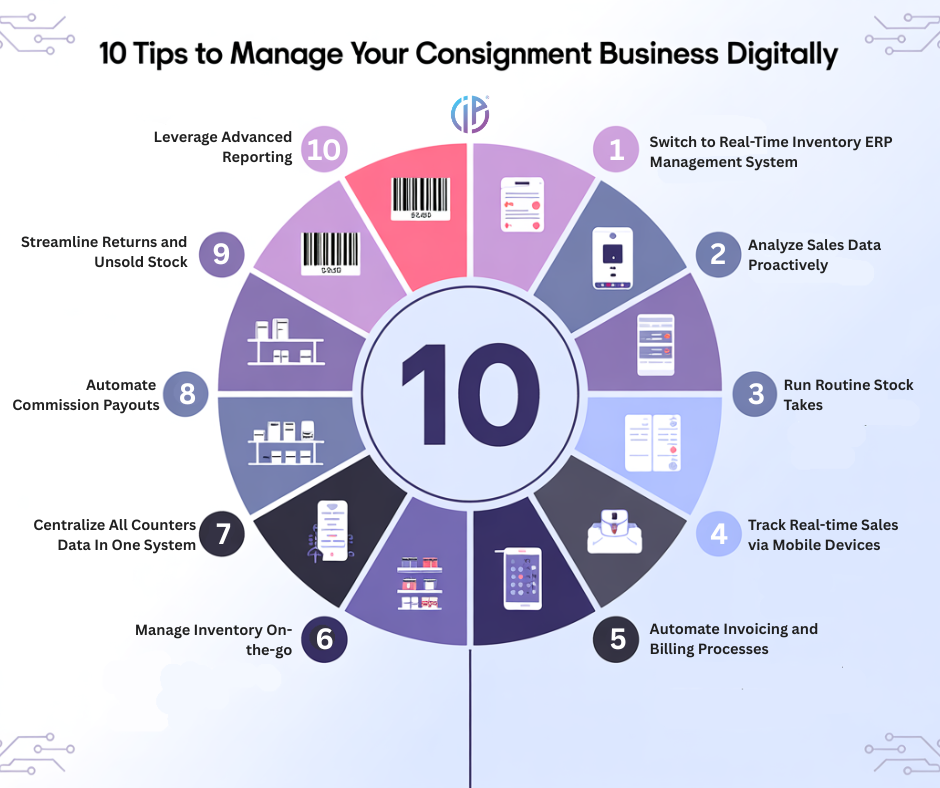10 Tips to Manage Your Consignment Business Digitally

Managing a consignment business isn’t just about stocking shelves, it’s about managing hundreds of SKUs, partner brands, return cycles, and commission payouts, often in real time.
One of our consignor customers- Branded Fashion, with over 500 retail counters nationwide, found themselves buried under spreadsheets, manual stock checks, and billing delays. As they grew, the pain points multiplied: lost inventory, unclear commission splits, and data stuck in silos.
Here’s how they turned things around using smart digital strategies and how you can too.
What is Consignment and Who Is It For?
In a consignment business model, retailers sell products on behalf of partner brands or suppliers. The consignor (retailer) doesn’t pay for the goods upfront, instead, they only pay the brand after the items are sold.
This model is popular in fashion, cosmetics, accessories, and lifestyle products, especially for those managing multiple counters, departmental stores (like ISETAN/ AEON), or concession spaces.
It’s a smart way to reduce inventory risk, but it comes with complexity: you’re juggling hundreds of SKUs, multiple return cycles, varying commission structures, and constant stock movement across outlets. Without the right digital tools, it’s easy to get overwhelmed.
1. Switch to Real-Time Inventory Management
“I used to find out we were out of a bestseller only after customers complained.”
With a cloud-based ERP system, Branded Fashion now tracks every item across stores and warehouse in real time- avoiding lost sales and improving reorder timing.
2. Use Data to Guide Sales Decisions
“Some items looked pretty, but they just didn’t sell. I didn’t know until it was too late.”
Now, our customer checks monthly sales dashboards and top-selling reports. It helps her focus on fast-moving items and request better styles from low-performing brands.
3. Run Routine Stock Reconciliations
“Once, we were off by 200 units during a year-end audit. It was embarrassing.”
Weekly digital stock counts and barcode scans have reduced mismatches. Branded Fashion's team now spends less time on stock checks—and finds problems early.
4. Track Sales Instantly via Mobile Devices
“When I travel, I still know what’s happening at every counter.”
Whether she’s at home or at a supplier’s event, Branded Fashion can view live sales by store, brand, or even SKU- right from her phone.
5. Automate Invoicing for Accuracy and Speed
“Manual invoicing meant late payments and lots of back-and-forth with consignees.”
Now, the system auto-generates monthly invoices, complete with returns and commissions, so Branded Fashion brand partners get paid accurately and on time.
6. Manage Inventory from Your Mobile
“Stock transfers used to involve phone calls, forms, and waiting.”
With the mobile app, Branded Fashion's team triggers stock transfers between outlets instantly- and even scans barcodes during stock takes with no paperwork.
7. Centralize Business Data in One Platform
“We used to manage sales on Excel, stock in Google Sheets, and invoices on paper.”
With everything in one system—sales, inventory, returns, commissions- Branded Fashion’s team collaborates better and spends less time searching for info.
8. Simplify Complex Commission Payouts
“Some brands got 20%, others 30%, and one had tiered rates. It was a nightmare.”
With automated commission rules, Branded Fashion's ERP system handles all calculations, avoiding disputes and saving days of manual work each month.
9. Streamline Returns and Unsold Stock
“We’d lose track of slow-moving items—until a box came back months later.”
Branded Fashion's team now flags items with low sales, returns them digitally, and restocks counters quickly—keeping inventory fresh and turnover high.
10. Use Built-In Reports to Drive Growth
“Before, I made decisions based on gut feeling. Now, I trust the data.”
Branded Fashion reviews weekly performance dashboards to plan promotions, cut underperforming brands, and reward her top consignees.

Ready to Go Consignment Digital?
Making the switch from spreadsheets to a smart consignment platform doesn’t have to be overwhelming. Here’s a simple roadmap to get started:
1. Audit your current process
Map out where you face the most manual work, delays, or errors—whether it’s stock reconciliation, invoicing, or reporting.
2. Start with inventory visibility
Choose a reliable Consignment inventory management ERP system that lets you track every SKU in real time, across all counters and the warehouse.
3. Automate invoicing and commission payouts
Look for tools that allow you to configure commission tiers and generate statements automatically—saving you hours of manual calculation.
4. Get your team on board
Train your staff to use mobile tools and dashboards. The right system should be intuitive and easy to adopt.
Whether you’re just starting out or looking to scale, embracing digital transformation can unlock new levels of efficiency and partnership success. The future of retail is real-time, data-driven, and mobile, and now’s the time to take the first step.
Discover how iDCP ERP can help your consignment business. WhatsApp us today at https://wa.me/60129379260 or visit our official website at www.idcp.my.



